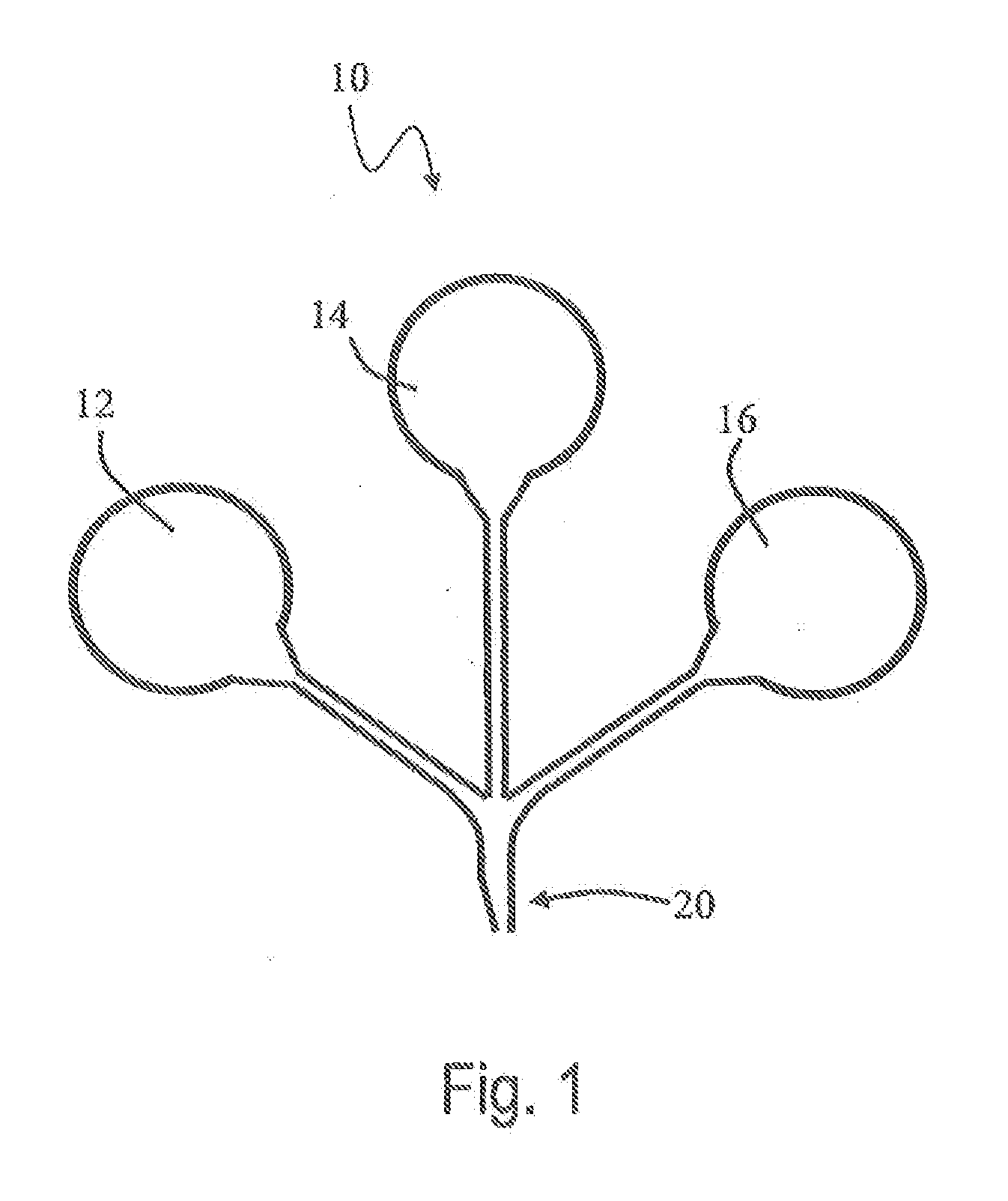Multiple Layer Polymer Interlayers Having a Melt-Fractured Surface
a polymer interlayer and melt-fractured surface technology, applied in the direction of lamination, thin material processing, synthetic resin layered products, etc., can solve the problems of multi-layer interlayers, optical distortion, etc., and achieve the effect of not affecting optical distortion
- Summary
- Abstract
- Description
- Claims
- Application Information
AI Technical Summary
Benefits of technology
Problems solved by technology
Method used
Image
Examples
example 1
[0087]Three three-layer interlayers are separately coextruded. Each interlayer comprises a 0.1524 millimeter (6 mil) layer sandwiched between two 0.3302 millimeters (13 mil) layers for a total thickness of 0.8128 millimeters (32 mils). The inner layer comprises 75 phr plasticizer (triethylene glycol di-(2-ethylhexanoate)) and 11.0% residual poly(vinyl alcohol), while the outside layers comprise 38 phr plasticizer (triethylene glycol di-(2-ethylhexanoate)) and 18.5% residual poly(vinyl alcohol).
[0088]Surface characteristics of the three layers are controlled during coextrusion with 30 melt fracture to provide differing levels of Rsm and Rz. Mottle, Rsm, and Rz for each interlayer is determined according to the procedure provided elsewhere herein. Rsm and Rz are the machine direction values (cross machine direction values are lower).
MottleSide 1,GradeRSMSide 2, RSMSide 1 RZSide 2 RZ270969441.135.5499999637.835.651008105454.855.4
[0089]By virtue of the present invention, it is now possi...
PUM
| Property | Measurement | Unit |
|---|---|---|
| coincident frequency | aaaaa | aaaaa |
| temperature | aaaaa | aaaaa |
| thickness | aaaaa | aaaaa |
Abstract
Description
Claims
Application Information
 Login to View More
Login to View More - R&D
- Intellectual Property
- Life Sciences
- Materials
- Tech Scout
- Unparalleled Data Quality
- Higher Quality Content
- 60% Fewer Hallucinations
Browse by: Latest US Patents, China's latest patents, Technical Efficacy Thesaurus, Application Domain, Technology Topic, Popular Technical Reports.
© 2025 PatSnap. All rights reserved.Legal|Privacy policy|Modern Slavery Act Transparency Statement|Sitemap|About US| Contact US: help@patsnap.com



